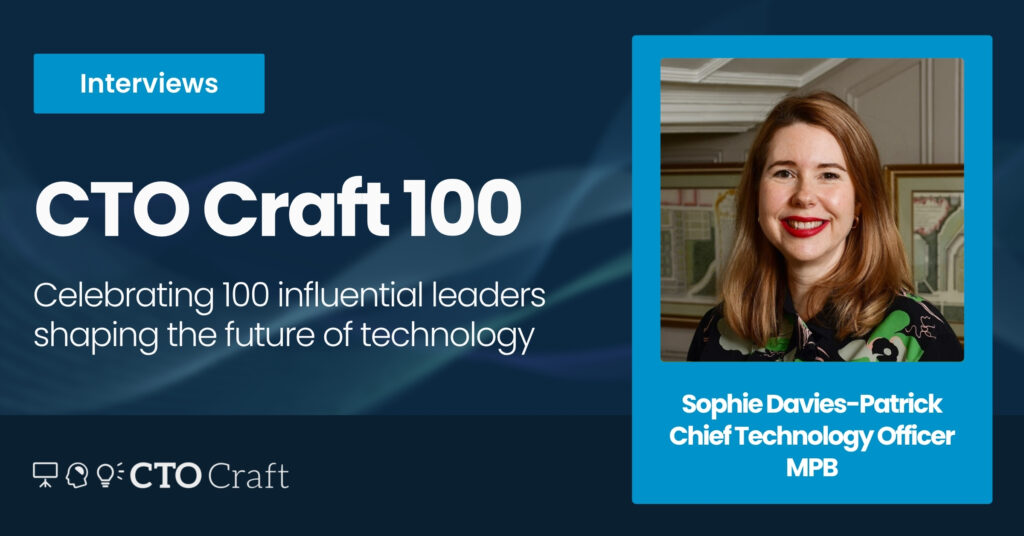Sophie Davies-Patrick, CTO at MPB, believes that a key role of the Chief Technology Officer is to lead their teams through periods of significant change. While acknowledging that AI is the current nexus of this change, she reinforced that this core function has always been and will continue to be fundamental to the role, much like past shifts driven by agile methodologies or other emerging technologies.
The Innovation and Governance Balancing Act
Successful innovation requires balancing rapid technological adoption with crucial governance responsibilities, “the really interesting challenge that AI definitely is subject to … is how you innovate and go fast enough, but how you also take your responsibilities on the governance side of CTOs seriously. So, for example, what is the risk tolerance of the company you’re at for speed versus quality, and what is non-negotiable? So data security, cyber security, call it what you will, of course, is paramount.”
To achieve this balance, Sophie has focused on empowering her team by providing them with dedicated time for professional development, removing financial barriers to experimentation with new tools, and securing executive buy-in for a culture of risk-taking. She emphasised that her CEO’s understanding that some experiments will fail is critical to fostering a safe environment for innovation.
The Evolving Role of Engineers
Looking to the future, Sophie argues that while AI will change the tools engineers use and automate certain tasks, the essential skills of problem-solving and understanding a business’s commercial context will become even more important. CTOs will continue to be the custodians of how technology drives business value.
“We put in place a dedicated continuous professional development time. So L&D time, which is fairly modest. It’s a few hours every Friday afternoon, but it’s enough time that it’s a habit for the team. Those who want to experiment and don’t have the time have that time. And those who are nervous to experiment can’t use the fact that they don’t have the time.”
“What is the risk tolerance of the company you’re at for speed versus quality, and what is non-negotiable?“
With a broader horizon, Sophie sees that while the tools and technologies will continue to evolve, the fundamental purpose of a CTO will remain the same. Their primary job is to act as the custodian of how technology delivers value to the business. She argues that the core of an engineer’s role—problem-solving, building, and automating—will not change. Instead, engineers will spend more time on understanding the business problem and the commercial context.
A Philosophy of Collaboration and Autonomy
Sophie’s personal leadership philosophy is deeply influenced by the principles of the open-source movement, which she sees as a model for a culture of transparency and collaboration. “So when I started my career in the 90s, the open source movement was kind of really gaining momentum. And I chose technology as a career because I wanted to solve difficult problems in an interesting way.” She applies this by encouraging a system of “aligned autonomy,” where teams are empowered to solve problems within strategic guardrails. This approach, she believes, promotes a sense of shared ownership and empowers engineers to make decisions, removing perceived barriers to progress.” When I first came across open source, the concept that the community working together to solve problems we all have was so influential for me. I think we all take it for granted now that that is the philosophy of our community. You kind of forget, … but that kind of underpinning of, if we all succeed together, is so fundamental to our industry.”
Download the full report here to explore the complete list, dive into the interviews, and take away ideas you can put into practice.

